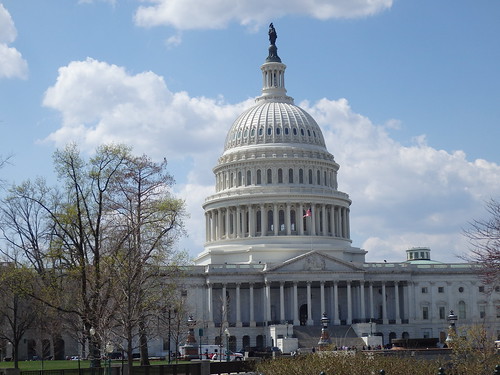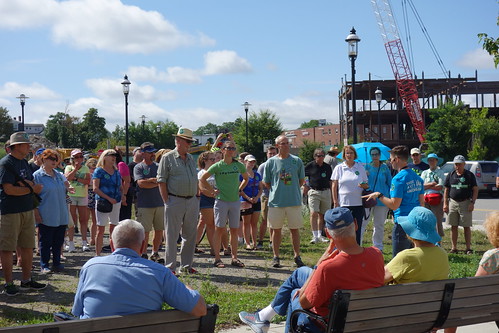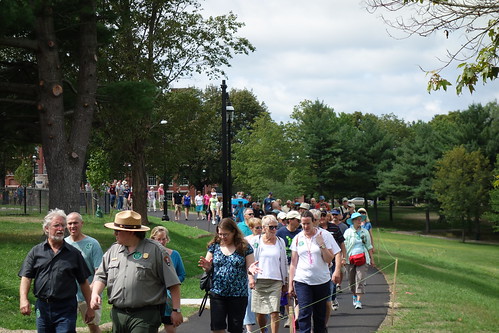Lowell Week in Review: August 13, 2017

Congressional Election
The big news this week – if you set aside the possibility of a nuclear exchange between North Korea and the United States – was the announcement by Niki Tsongas that she would not seek reelection to Congress in 2018. After Tsongas released her news this past Tuesday, there were immediately stories about possible successors, but that election is still a long way off so I’ll save a review of those names for a future post.
For now, just a few quick observations: The election for this Congressional seat will be held next fall with a primary in September 2018 and the general election in November 2018. Besides Representative in Congress, other offices on that ballot in that election will include US Senate (for the seat now held by Elizabeth Warren); Governor (now, Charlie Baker); all the Constitutional officers (Lieutenant Governor, Secretary of State, Attorney General, Treasurer and State Auditor); and all state senators and state representatives.
That latter group is important because a number of the individuals mentioned as candidates for Congress are state senators who would have to forego reelection to seek the Congressional seat. That would create “open” seats for those offices and trigger an electoral scramble for them. For instance, if the incumbent state senator runs for Congress, there would be an open state senate seat. If the incumbent state rep runs for that senate seat, there would be an open state representative seat. And by “open” I’m merely drawing the distinction between an election for an office in which the incumbent office holder is running, and one in which he or she is not. Anyone can run for any office at any time; it’s just that when there is no incumbent in the race, more candidates are attracted and the race takes on an entirely different dimension.
Coincidentally, the special Congressional election that elected Tsongas ten years ago precipitated the creation of this blog. Marty Meehan, who had held the seat since 1992, was appointed chancellor of UMass Lowell in March 2007 which triggered that special election. Tsongas prevailed over a Democratic field that included Eileen Donoghue, Jamie Eldridge, Barry Finegold, and Jim Miceli. She went on to defeat Republican Jim Ogonowski. That year also taught us that an election for an open Congressional seat is a great time to be blogging, so if anyone reading this is contemplating launching a website of their own, now is the time to do it. (And if you’d like to reminisce about that election and what was going on in Lowell at that time, go to the Loom Press website and order your copy of History as It Happens: Citizen Bloggers in Lowell, Mass.).

Lowell City Election
Before we get to the 2018 Congressional race, we have a city election coming up. Tuesday was the deadline for submitting nomination signatures. Twenty-three candidates qualified for the council ballot and ten for the school committee. A preliminary election will be held on September 26, 2017 to reduce the council field to 18 who will then be on the general election ballot on November 7, 2017 along with all ten school committee candidates.
The council candidates are:
- Corey Belanger
- Rodney Elliott
- Edward Kennedy
- John Leahy
- James Leary
- Rita Mercier
- James Milinazzo
- Daniel Rourke
- William Samaras
- Joseph Boyle
- Sokhary Chau
- Karen Cirillo
- David Conway
- Daniel Finn
- Robert Gignac
- Martin Hogan
- Matthew LeLacheur
- Robert Merrill
- Jose Willie Negron
- Vesna Nuon
- Pan So
- Jeffrey Wilson
- Paul Ratha Yem
The then school committee candidates are:
- Andre Descoteaux
- Jacqueline Doherty
- Robert Hoey
- Connie Martin
- Timothy Blake
- Noelle Creegan
- Dominik Lay
- Dennis Mercier
- Gerard Nutter
- Daniel Shanahan

Morey School, old red brick building in foreground; new yellow brick building behind it.
Neighborhood Schools
The City Council at last Tuesday’s meeting endorsed a motion by Councilor Rodney Elliott for a report on the bidding of the busing contract for Lowell schools this year and also for plans to provide city-funded buses beginning next year for Lowell High students (who have previously had to pay for their own LRTA bus passes). In discussing this motion, Councilor Elliott and several colleagues endorsed a greater reliance on “neighborhood schools.”
That term, neighborhood schools, has been freighted with historical, political, social, and cultural baggage since the court-ordered desegregation plan imposed on the Boston public schools back in the 1970s. Lowell itself is under a consent decree that arose from a lawsuit brought in the late 1980s against the city by parents of minority students who alleged unequal treatment and facilities in the Lowell public schools. On the verge of a federal takeover of the Lowell public schools, the city and the parents entered into a voluntary desegregation plan that was approved by the US District Court for Massachusetts. That plan continues in operation today.
However, I do believe, and have for some time, that we should place greater emphasis on sending student to school in the vicinity of where the students live. But I don’t think my concept of a “neighborhood school” matches up with what others are advocating.
Back in 2010, I wrote a long blog post explaining my view of what a neighborhood school should and could be – a 24/7 community center that provided before and after school childcare, after school enrichment programs, adult education, sports facilities, internet access, meeting space and more for those who live in the neighborhood. I argued in that blog post that all the benefits that would flow from such a comprehensive arrangement would outweigh whatever slippage might occur in school integration (and I’m not sure there would be much of that since Lowell schools today are already majority minority and several of the city’s neighborhoods are far more integrated now than they were back in the late 1980s).
But a big reason others advocate “neighborhood schools” is mainly as a means of cutting costs, the cost of busing students. My concept of a neighborhood school would bring with it all kinds of additional costs, so while there might be less busing, these neighborhood schools would be more expensive. And more effective. Please read the post when you have a chance.
A more practical obstacle to a return to neighborhood schools is that most of our schools aren’t centrally located in the neighborhoods in which they are located. A positive outcome of the 1988 Lowell desegregation plan was that the city jumped to the front of the queue for state reimbursement for new school buildings. That’s why Lowell was able to construct more than a dozen brand new schools in a very short period of time. But the city had been mostly built out by then, so it was difficult to find vacant space for these new schools. Some were built in place of very old schools but others were squeezed into lots on the periphery of neighborhoods, far from where most people lived. So even with a return to neighborhood schools, there would still be a need for considerable busing of students.

Hamilton Canal District tour (Lowell Justice Center in background)
Hamilton Canal Update
Thanks to Claire Ricker of the city’s Department of Planning and Development for leading yesterday’s Lowell Walk on the Hamilton Canal District which was attended by 110 people. If anyone is feeling uneasy about the future of the Hamilton Canal District, get on a tour led by Claire and your confidence will be restored.
Besides hearing about plans for buildings, parking garages and infrastructure improvements within the Hamilton Canal District itself, Claire also brought the tour to the Lord Overpass to describe the work to be done there, which is sometimes called “the big fill” since the portion of Thorndike Street that now passes underneath the overpass will be raised up to grade level of the overpass to create one big intersection, all on the same level. The image below is an earlier concept sketch of the area showing Thorndike running from left to right (north to south) with the Hamilton Canal District in the upper left and the South Common in the upper right.

Proposed redesign of Lord Overpass
After seeing the Lord Overpass, yesterday’s tour crossed Appleton and Summer Streets and stopped at the South Common. There, we heard about the coming improvements to that part of Thorndike Street and to the South Common.

On the newly-opened South Common walkway
The tour over, we christened the new South Common walkway which just opened a few days ago, by leading 110 people over it to South Street and back towards the Hamilton Canal and the end of our tour.
Next week’s Lowell Walk is on the history of public health in Lowell. It will be led by Sue Levine and Clare Gunther of Lowell Community Health Center and will begin at 10 am from Lowell National Park Visitor Center.
At 1 pm that same day (August 19), Bob Forrant will reprise his Underground Railroad in Lowell tour, which is the most popular tour in the history of Lowell Walks, having drawn 275 people when Bob led it earlier this summer. This tour will also begin at Lowell National Park Visitor Center at 246 Market Street. Bob will give the same tour again on Sunday, September 10, 2017 at 1 pm, also starting from the Visitor Center. These two walks are sponsored by Lowell National Historical Park.
Well done, Richard Howe.
Richard I believe another important change to the congressional district (besides the name)is the addition of the route 2 corridor. I don’t believe Fitchburg,Leominister or the Gardner areas were involveved in the voting ten years ago. I believe this may be the first contested (D) primary since congressional redistricting with the new voting areas.It will be interesting to see if the new area shifts the balance of power from the northern areas of the district Lowell, Lawrence and Haverhill. A few names are mentioned from Andover but can they carry an election with half the town in the district. Can a republican or a conservative democrat use the new area along with a more a moderate base in the north to win the seat.Should be interesting to see how this unfolds.